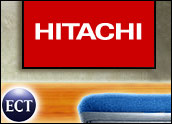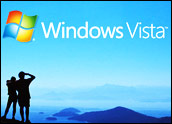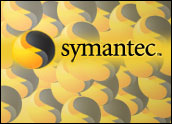
Social networking portal MySpace is getting into the news aggregation business as its new MySpace News feature offers users the ability to “rate” stories and control which ones get top billing.
MySpace News differs from other news aggregators that allow user ranking primarily because it organizes the thousands of news items it finds into 25 main categories and 300 subcategories. The search algorithm scans thousands of Web sites, blogs, newspapers and magazine sites and displays news items with a headline and short summary, MySpace says.
MySpace News users can select a category they find to be of interest and then rate the stories. The ratings directly affect the “placement and prominence” of the stories, including whether they make the MySpace News homepage.
“The most relevant items gain or lose site popularity based on the reaction of the community,” said MySpace. “The news algorithm continually populates MySpace News with new content, creating a dynamic platform for users.”
Everybody’s an Editor
The rating feature allows “the community to be the editorial engine,” stated MySpace Cofounder and President Tom Anderson.
MySpace News is currently in beta.
The new feature is powered by news aggregation technology created by Newroo, a company founded by Brian Norgard and Dan Gould and acquired by Fox Interactive Media (FIM) last year. MySpace, owned by Rupert Murdoch’s News Corp., said the Newroo engine was “incubated by FIM Labs to cultivate the technology” for use by MySpace and is the first first FIM acquisition to be integrated with the site.
MySpace isn’t the first Web property to allow user manipulation of story rankings. Netscape News, Digg and other sites offer similar voting capabilities.
“I think the idea of community-edited news is very interesting,” Sterling Market Intelligence online media analyst Greg Sterling told TechNewsWorld. The main differentiator between MySpace News and other news sites that allow viewer rankings is the sheer size of MySpace, he added.
“The thing that makes it significant, obviously, is that it’s MySpace, and My Space has such a large user base,” Sterling said. “A smaller competitor seeking to duplicate what Digg is doing would be greeted with lot of skepticism in a way MySpace isn’t because of its position in the marketplace.”
News Newbies
MySpace’s venture might bring more young people in contact with, an involved with, the news, Sterling noted. Jupiter Research analyst Barry Parr agreed.
“Not only are we talking about MySpace becoming an intermediary in the news business, but, in particular, between the news business and younger readers,” he told TechNewsWorld. “Young people are not as interested in the news as older people. People’s interest in news increases with age. There is a potential here to expose interesting and important news stories to an entirely new audience.”
Putting readers, in essence, in a position to rate and rank news might bother some hardcore journalists, who may fear the front pages of such news sites could become inundated will long items discussing Paris Hilton’s latest escapades, for example. However, Sterling noted MySpace is unlikely to try selling itself primarily as a news outlet.
“What they are doing is creating an application they think will be embraced by their users,” he said. “It’s a community site, a social network. So this approach is consistent with that.”
Online news gatherers might seem scary to traditionalists, Parr noted, but they have a precedent. “They’re in the business of aggregating audiences,” he said. “They’ve got a big audience now and they are doing to the newspapers what the newspapers did to everybody else: Aggregating a big audience and controlling it. It’s something that would look pretty familiar to William Randolph Hearst.”




















































